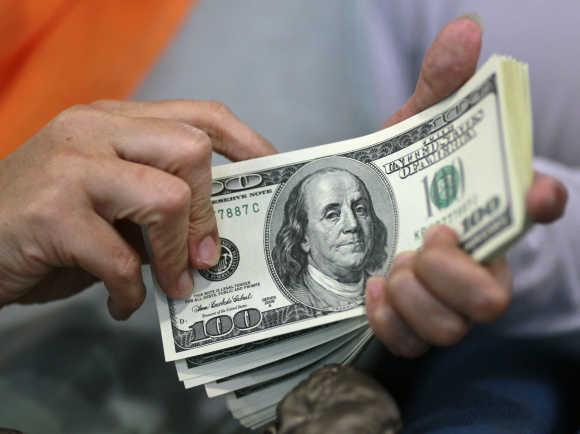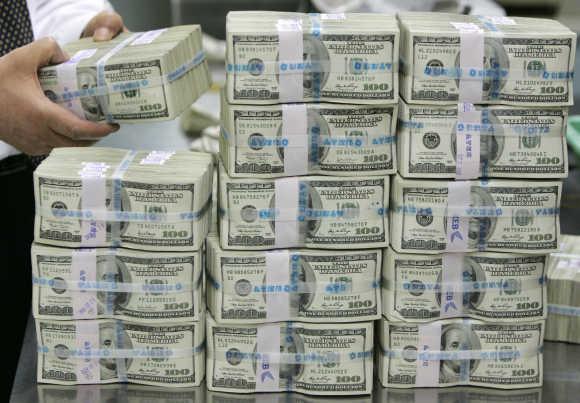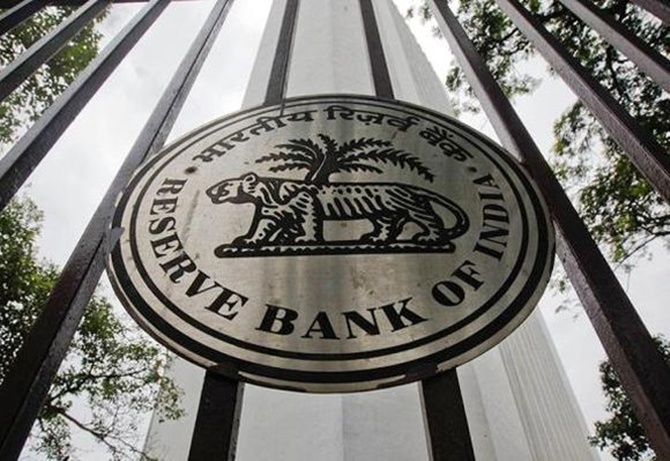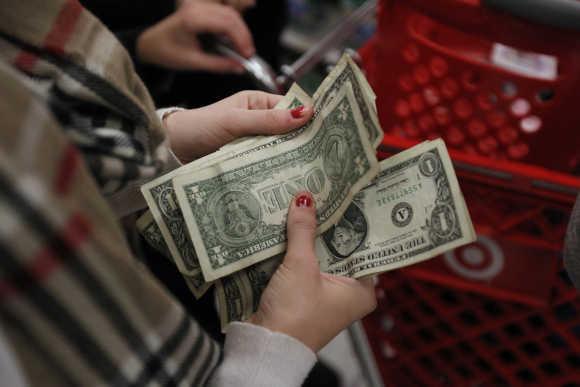
Regrettably, another voluntary disclosure scheme may be needed to strengthen India's foreign exchange reserves, says Jaimini Bhagwati.
It can be argued that the fundamentals of the Indian economy over the medium term continue to be sound. This claim may currently sound specious; but, since monsoons have been adequate this year, demand will pick up and spur growth.
The major impediments to higher growth over the next 12 months stem more from how soundly India finances its current account deficit and reduces its fiscal deficit.
Given India's limited options, this article reluctantly suggests a voluntary disclosure scheme (VDS), which could conceivably be implemented within the next two months.
Fuel, fertiliser and food subsidies are among the big-ticket subsidies provided by the Indian central and state governments.
Some food subsidies are warranted. By contrast, fertiliser subsidies are even less justified than fuel subsidies, though politically difficult to reduce in the near term. Consequently, inflationary pressures will persist and so will the causal factors of confidentiality and convenience, which drive incremental cash investments in gold.
...

In terms of net foreign exchange outflows from India's debt and equity markets, an important concern is the extent to which US growth recovers and the Federal Reserve's purchases of longer-term Treasuries and mortgage securities start "tapering" down.
The UK economy has started to do better and the euro zone is bottoming out. To sum up, there is little that India can immediately do to reduce oil or gold imports, or to directly address risks arising from the G7 economies that are continuing to recover.
It has been reported that India will invest about $4.5 billion in International Bank for Reconstruction and Development bonds to be able to borrow exactly the same amount from the IBRD, since we have reached the country risk limit for borrowings from that institution.
IBRD bonds are issued at yields of about six-month dollar Libor, or London interbank offered rate, minus 20 basis points; and IBRD loans carry interest rates of around six-month dollar Libor plus 80 basis points.
...

If the information that India will invest in IBRD bonds is correct, it is surprising that we are prepared to bear an additional interest cost of one per cent to borrow an equivalent amount from IBRD along with delays related to project clearances.
On September 4, 2013, the Reserve Bank of India (RBI) enhanced the prospects for capital inflows from non-resident Indians by announcing an exchange rate guarantee for foreign exchange deposits with maturities of three or more years. This move has improved sentiment about the rupee's exchange rate.
However, the exchange rate risk of converting fresh foreign exchange deposits to rupees and back to the corresponding foreign currencies at maturity does not disappear. This risk will show up on the RBI's balance sheet as a contingent liability, and hence such deposits should be limited.
Future outflows from the debt market by foreign institutional investors (FIIs) would be limited since residual foreign investment in government debt stands at about $20 billion. FII equity outflows too should have an upper bound.
...

If there are net equity outflows of, say, $15 billion, this would cause market levels and the rupee to plunge and it would be counterproductive for FIIs to sell more. However, if India's credit rating is downgraded, as per FII investment norms, they would have to reduce exposure to India.
Another source of risk is that the last four years of extremely low interest rates in the larger G7 economies have created several asset bubbles. As US interest rates inevitably rise, bond market bubbles would be among the first to be pricked.
Further, although real interest rates are low in India, investment decisions are based on nominal rates.
It follows that the RBI has to reduce interest rates to push investment and growth. Lowering interest rates would put pressure on the rupee exchange rate and this is another reason to bolster foreign exchange reserves in anticipation.
It has been reported that the US and Switzerland are close to a deal to settle a long-standing dispute that Swiss banks help US nationals to evade taxes. It appears that individual Swiss banks may have to pay 20 to 50 per cent of the amounts stashed away in undisclosed US accounts.
...

Swiss authorities are also working with the European Union to clamp down on tax evasion and money laundering. Switzerland has over $2 trillion of overseas deposits and it is anecdotally understood that Indians have accumulated around $500 billion in that country and elsewhere.
It is a positive development that on the sidelines of the latest G20 Summit in St Petersburg on September 5-6, 2013, Japan agreed to increase rupee-yen currency swap lines with India from $15 billion to $50 billion.
The G20 summit document encourages member countries to co-ordinate their efforts to reduce capital flight to tax havens. India's suggestion that tapering of US and other developed countries' expansionary monetary policies should be gradual was noted by the G20.
On September 18, 2013, the US Federal Reserve announced that it will continue for now to purchase Treasury plus mortgage-backed securities at the rate of $85 billion per month. India should make full use of the breathing room provided by this US central bank decision to put its own economic house in order.
...

Prudent risk management, the need to encourage fresh investment and India's limited options on what can be done immediately suggest that the country needs to augment its foreign exchange reserves and rupee resources through a VDS.
This VDS could be open for three months, offering, say, three per cent less than current market interest rates on deposits of maturities of three years and more.
The Voluntary Disclosure of Income Scheme of 1997 was indemnified against past violations of the Income Tax Act and the Foreign Exchange Regulation Act - but not against civil liabilities and the Prevention of Corruption Act - and it garnered about Rs 10,000 crore.
The growing international scrutiny of tax havens should be worrying for tax evaders. Consequently, a VDS offer could attract as much as $50 billion (approximately Rs 3 lakh crore).
All law-abiding citizens would be revolted by another VDS scheme since it amounts to condoning criminal behaviour. It is possible that such a scheme would raise expectations that India would make amnesty offers periodically and lead to continuing flight of capital.
The counter-argument is that a VDS would bring back unaccounted funds in term deposits that could be used for investment. Would there be additional round-tripping?
This is unlikely, since three months is not enough time for significant amounts of fresh round-tripping. On balance, the positives would outweigh the negatives if the funds that come back to the formal banking system, from within India or abroad, are used to boost growth and employment.
The writer is India's high commissioner to the United Kingdom. These views are his own.